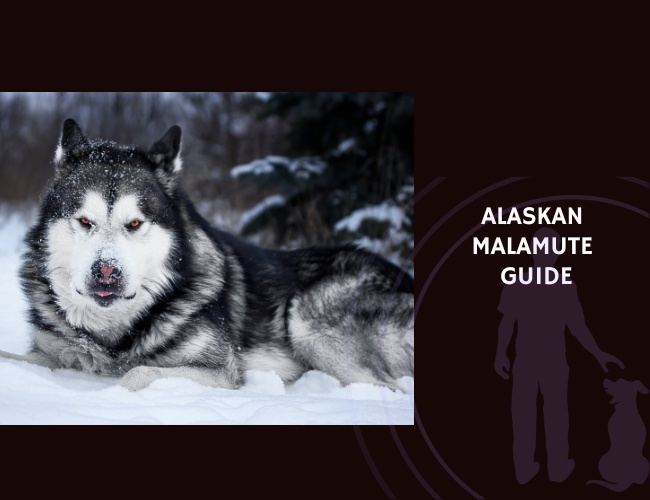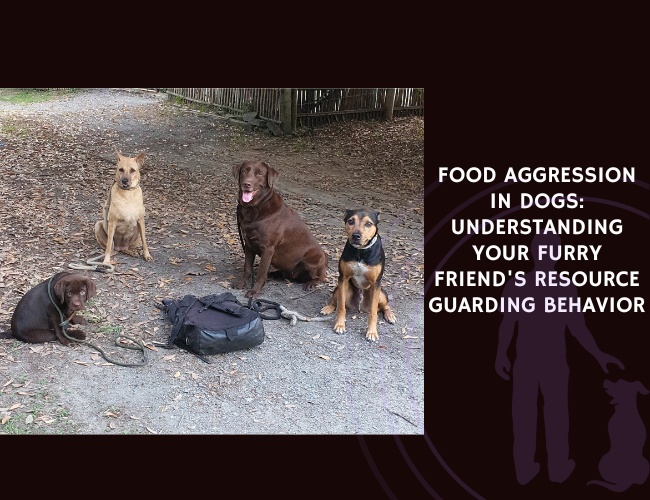Introduction to the Alaskan Malamute
Arctic Origins and Breed Overview
The Alaskan Malamute is an Arctic spitz-type breed with deep roots in the frozen lands of the north. Known for remarkable endurance and strength, this dog is one of the oldest Arctic sled-pulling breeds. Its powerful build and thick, weather-resistant coat allowed it to thrive alongside the native peoples of Alaska, lending both muscle and companionship in one of the world’s harshest environments.
Bred by the native Inuit people known as the Mahlemuts, the Alaskan Malamute played a key role in everyday Arctic life. These dogs pulled heavy freight sleds across ice and snow, moving supplies over long distances when survival depended on teamwork and resilience. Their work ethic and friendly nature quickly made them valued members of the community, trusted not just as working animals but also as loyal pack companions.
Historical Background as Sled-Pulling Dogs
Historically, the Malamute’s responsibilities went far beyond pulling sleds. They helped move families and goods through blizzards and over frozen rivers, often working side by side with other dogs as a cohesive team. Their stamina was legendary—they could cover long distances through snow, displaying both power and reliability. The Alaskan Malamute’s history as a freight dog means the breed is physically robust and mentally tough, with a need for purpose and activity.
Their adaptability to the frigid Alaska climate is built into their double coat, which shields them from cold temperatures and wind. Even today, you can see the intelligence, independence, and endurance shaped by generations of living and working in extreme conditions.
Characteristics and Appearance
The Alaskan Malamute is known for impressive size and strength. Males often stand around 63cm at the shoulder and weigh about 38kg, while females are slightly smaller. Their broad heads, upright triangular ears, and deep chest give them a wolf-like profile. A plumed tail, carried over their back, is a defining characteristic.
The dense double coat comes in shades ranging from light gray to black, sometimes with red or sable highlights, and always a lighter face mask and underbelly. Their expressive eyes, usually brown, show both intelligence and warmth.
Malamutes are not only striking but also practical in design. Their large, tough paws are suited for snow and ice. Their strong, muscular legs and bodies are built for work, but they carry themselves with a gentleness that endears them to many. This breed’s confident appearance matches its balanced temperament, making it both a reliable worker and a devoted member of the family.
The traits that make Alaskan Malamutes unique—strength, endurance, and social intelligence—continue to define their role in modern homes, where they need both space and companionship to thrive.
Character & Behavior
Independence and Pack Cohesion
Alaskan Malamutes are famous for being independent thinkers. This trait comes from their history as sled-pulling freight dogs in the Arctic, where they often had to make quick decisions and handle tough situations. While they can be very determined and enjoy working solo, they also have a strong desire to be part of a group, especially with other Malamutes or humans they trust.
Their pack cohesion means they love structure and benefit from clear leadership. Even though they are not typically people-pleasers, they will respect and connect with family members who show consistency and guidance.
Work Ethic and Endurance
Malamutes are hardworking and energetic dogs. They are happiest when they have a purpose. Their stamina is impressive; these dogs were bred to pull sleds across long distances in harsh conditions. Boredom can lead to mischief, as their minds and bodies crave activity and challenges. Giving them jobs, like carrying a backpack or joining in family activities, keeps them engaged and content.
Prey Drive, Territoriality, and Resource Guarding
These dogs have a naturally high prey drive. This means they may chase after small animals if not carefully supervised. It’s important to remember this instinct is deeply rooted in their genetics.
Their territorial instincts are usually moderate. Most Malamutes will alert you to newcomers but are not extreme guard dogs. Still, some individuals may display resource guarding. They might protect food, toys, or spaces from other dogs or pets. Early training and clear rules help prevent these behaviors.
Bond with Humans
Alaskan Malamutes form strong, affectionate bonds with their families. They are loyal and enjoy spending time with their humans but often show emotional independence. Don’t expect constant cuddles—they want attention on their own terms!
Malamutes are not naturally submissive and will rarely back down if challenged. Their trust and love grow best in a supportive, professional environment with gentle but firm boundaries.
Vocalization Patterns
This breed is known for being vocal, but in a unique way. Instead of barking, Malamutes often “talk” by howling or making a “woo-woo” sound. These noises are part of how they communicate with their human and animal pack.
Vocalization usually signals excitement, playfulness, or a desire for attention. It’s rarely a sign of distress, so owners should learn to appreciate the breed’s expressive nature. 😊
With their unique personalities and behaviors, Alaskan Malamutes thrive with experienced care and thoughtful structure. This sets a strong foundation for future learning and successful companionship.
Training & Education
Importance of Early Socialization and Impulse Control
Alaskan Malamutes are known for their independent spirit and strong will. From a young age, it is crucial to start early socialization for these dogs. Introducing them to a wide variety of people, animals, sounds, and environments builds their confidence and helps prevent fear-based behaviors later in life. Socialization should start the moment a puppy comes home and continue through their formative months. This process helps your Malamute learn how to interact calmly with others, reducing the risks of dog-dog aggression and resource guarding.
Impulse control training is another key skill for Malamutes. This breed typically has a high prey drive and a natural eagerness to work. Teaching basic commands such as “sit,” “wait,” and “leave it” early on helps set clear expectations and boundaries. Keep sessions short, fun, and routine to match their attention span and need for variety.
Effective Training Methods for Malamutes
Alaskan Malamutes do not respond well to overly repetitive or strict training routines. They prefer learning with purpose, especially when the activity taps into their natural intelligence and working instincts. Purposeful training includes:
- Sled-pulling or weight-pulling games
- Search-and-find activities
- Obstacle courses or problem-solving games
Training sessions should be interactive and meaningful. Using engaging exercises keeps your Malamute’s attention and makes learning enjoyable. Activities that involve movement or teamwork mirror their historical role and cater to their high energy reserves.
Consistency in commands and routine is important, but so is adapting to your dog’s mood. If they seem bored or frustrated, switch up the activity to maintain their enthusiasm.

Positive Reinforcement and Motivational Tools
Positive reinforcement is the foundation of successful Malamute training. When your dog follows a command, immediately reward them with praise, a treat, or a toy. This approach builds trust and makes the dog eager to learn. For many Malamutes, food can be an effective motivator, but some individuals may be less food-driven.
For Malamutes not motivated by food, consider these rewards:
- Verbal praise and petting
- Short play sessions with their favorite toy
- A quick break to sniff or explore
Avoid physical punishment or dominance-based methods, as these often lead to resistance and stress in this independent-minded breed. Patience, consistency, and respect for their autonomy are keys to success. Building a partnership through supportive and professional training helps your Malamute thrive and strengthens your bond. 😊
As your journey continues, understanding your Malamute’s unique needs in every aspect will ensure a harmonious life together.
Nutritional Recommendations
Caloric Needs and Feeding Guidelines
Alaskan Malamutes are large, active dogs that need an informative and supportive approach to nutrition. Their caloric needs can vary a lot based on how active they are, the climate, and whether they work as sled dogs or live primarily as companions. Dogs living and working in cold environments need more calories to stay healthy and energetic. In contrast, Malamutes who are mostly household pets need careful portion control to avoid unwanted weight gain. Obesity can be a real risk if a Malamute does not exercise enough, so it is important to feed them based on energy output. Always use an energy-adjusted commercial dog food or talk to a veterinarian for custom Alaskan Malamute Nutrition.
Ideal Macronutrient Balance
To support the breed’s muscular build and big energy reserves, look for food that offers high-quality protein. Aim for about 22–25% protein content in their food, which will assist with building muscle and keeping up their stamina. Malamutes also do well with moderate fat levels for energy and coat condition, but do not go overboard—too much fat can lead to health issues. Carbohydrates are not as important for this breed and some Malamutes have sensitive stomachs when given low-quality or high-carb foods. Always read the ingredient list and go for foods with protein-rich meats and digestible grains or veggies.
Essential Nutrients for Coat and Digestion
Alaskan Malamutes have a thick, double coat that needs extra nutritional care. Omega-3 and omega-6 fatty acids play a big role in keeping their skin healthy and their fur soft. Zinc is also key—lack of zinc can cause skin conditions, especially in Arctic breeds like the Malamute. Make sure the food has B vitamins too, which support both skin and overall health. Some Malamutes also show digestive sensitivities, especially to foods with fillers or artificial additives. Stick to high-quality foods with clearly listed, simple ingredients to help avoid stomach upset and allergic reactions.
Portion Control and Feeding Schedule
Active working Malamutes may need more frequent feedings to stay full of energy, while those in pet homes usually benefit from two measured meals a day. Avoid free feeding—these dogs can overeat if given the chance. When switching foods or introducing new ingredients, do so gradually to minimize digestive issues.
With an informative and professional approach to meal planning, you can keep your Malamute at a healthy weight and looking their best all year round. Their social and energetic nature, combined with a protein-rich diet, will power them through family adventures and daily walks alike.
Next, we will explore more about supporting this breed’s overall wellness.
Strong. Wild. Loyal.
Independent Thinker
Malamutes are no lapdogs. They’re thinkers, doers, and sometimes rebels. Their intelligence is matched only by their stubbornness — which means you’ll need a training plan based on mutual respect, not dominance. Give them purpose, and they’ll rise to it.
Born to Work
Daily action isn’t optional. This breed demands movement — long walks, weight-pulls, pack hikes, or jobs that challenge their body and mind. A bored Malamute is a destructive one. But a fulfilled Malamute? Calm, balanced, magnificent.
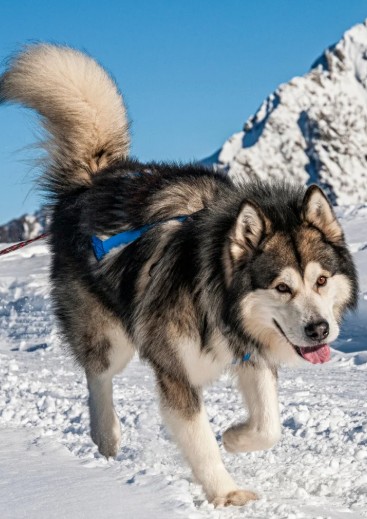
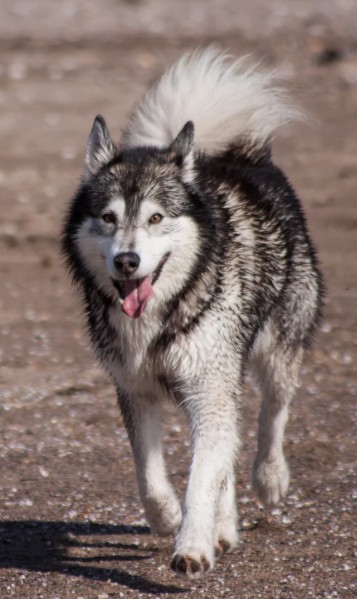
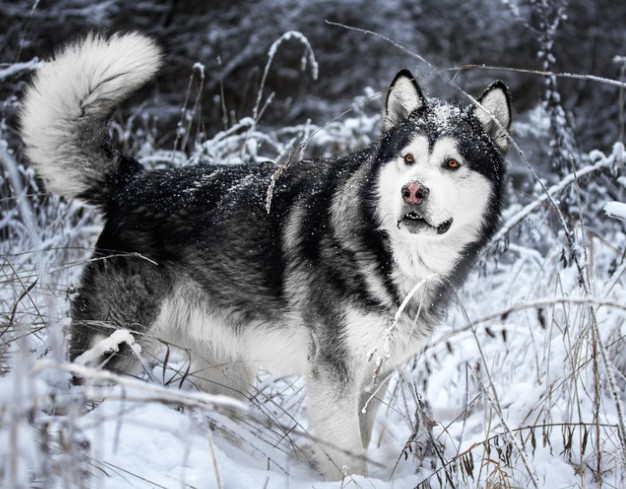
Emotionally Tuned
Don’t be fooled by their independence. Malamutes bond deeply and read emotional cues with stunning precision. They thrive on inclusion, not isolation. Their howl isn’t a complaint — it’s conversation. They’re not loud for attention. They’re loud for connection.
Health Concerns & Management
Musculoskeletal Issues
Alaskan Malamutes, known for their strength and stamina, are unfortunately prone to several musculoskeletal conditions that need professional and supportive care. Hip dysplasia is one of the most common concerns. This condition happens when the hip joint is not formed correctly, which can cause pain and trouble moving, especially in older dogs. Another possible issue is chondrodysplasia, often called “dwarfism,” which leads to abnormally short limbs and can affect the dog’s comfort and mobility. Polyneuropathy, a disorder affecting the nerves, can also appear and often results in weakness in the legs or unusual walking patterns. Regular checkups with your veterinarian are informative and helpful for catching these issues early and managing them over time.
Sensory Deficits and Skin Conditions
Some Alaskan Malamutes may be born with congenital deafness, making early hearing tests especially important for puppies. Hypothyroidism is also seen in this breed. This condition can cause fatigue, weight changes, and coat problems if not managed.
A supportive approach is key for another common issue: zinc-responsive dermatosis. This skin condition shows up as flaky, crusty skin and can be especially noticeable on the face and legs. Professional management involves dietary changes and sometimes zinc supplements, following guidance from your veterinarian. Routine skin checks and attention to any itching or discomfort will help you keep your Malamute healthy and happy.
Eye Health Concerns
Malamutes are at risk for several ophthalmologic problems. Cataracts, which cloud the eye and can lead to vision loss, and progressive retinal atrophy (PRA), a slow deterioration of the retina, are among the most common. Regular eye exams help detect these problems early, allowing for supportive and professional intervention that keeps your dog as comfortable as possible.
Preventive Care and Longevity
Prevention is always the best strategy when it comes to managing your Alaskan Malamute’s health. Routine vet visits, joint health supplements (as recommended), and annual bloodwork help catch concerns before they become serious. Feeding a balanced diet rich in key nutrients, maintaining a healthy weight, and providing daily exercise—at least 90 minutes—supports strong muscles and joints.
With proper care, most Alaskan Malamutes enjoy a supportive and well-loved life spanning 10–13 years. This informative guidance ensures you’re prepared to help your companion thrive, whatever the season or stage of life.
As you continue learning about what it takes to care for an Alaskan Malamute, understanding their unique lifestyle needs will help you create a comfortable and joyful home for your furry friend.

Lifestyle Requirements
Exercise Needs
Alaskan Malamutes are built for action. Their ancestors pulled heavy sleds through harsh Arctic climates, giving them powerful muscles and high stamina. These dogs need at least 90 minutes of exercise every day to stay healthy and happy. Activities like running, hiking, pulling carts, and playing fetch help them burn off energy. Without enough activity, Malamutes can become bored or frustrated, which may lead to unwanted behaviors like digging, chewing, or escaping.
Vigorous exercise is essential because Malamutes naturally have a high working drive. Walks around the block are not enough. They thrive when they have space to move freely and can participate in resistance-based or team activities. If possible, include physically challenging tasks—such as pulling a weighted sled or participating in organized canine sports—to keep them mentally and physically engaged. These routines contribute to a supportive, informative, and professional approach to Malamute care.
Housing Considerations
Housing an Alaskan Malamute comes with special requirements. Secure fencing is a must, as Malamutes are clever and persistent escape artists. They are known for climbing, digging, and squeezing through small openings. Fences should be tall—usually at least 1.8m—and extend into the ground or have a barrier to discourage digging. Regularly check for weak spots to ensure your yard remains secure.
Climate plays a crucial role in their well-being. Malamutes are designed for cold or temperate weather thanks to their thick double coats. They easily overheat in tropical or hot environments, so always provide shade, cool water, and a place to escape the sun. During summer months, avoid rigorous activities when it is hot outside, and use gentle cooling methods if necessary.
Inside the home, provide enough space for movement. Malamutes do not like being cramped. A house with a large enclosed yard is ideal. Regular routines and clearly defined spaces add structure and help them feel stable.
Social Environment and Emotional Well-Being
Alaskan Malamutes thrive in supportive and stable social environments. They form strong bonds with human family members and may get along with other large dogs, especially those of the opposite sex. However, they are less compatible with small pets due to a strong prey drive. Early socialization helps, but supervision is always important with other animals.
Routine and clear leadership are essential for the Malamute’s emotional health. These dogs appreciate knowing what to expect each day. Keep mealtimes, walks, and play periods on a consistent schedule. Offer spatial freedom within safe boundaries, allowing them to explore and satisfy their curiosity without risk of escape.
Providing a calm, confident, and non-confrontational leadership style reassures Malamutes and supports their need for both independence and belonging. This professional and informative approach ensures their physical and emotional well-being stays in top shape, making them content, healthy companions.
Transitioning forward, it is important to evaluate your compatibility with this breed, considering what ownership truly demands.
Is an Alaskan Malamute Right for You?
Assessing Compatibility with an Active, Independent Breed
Choosing an Alaskan Malamute is a big decision, and it’s important to be both informative and supportive as you consider this loyal but strong-willed Arctic breed. Malamutes are packed with energy and spirit. They flourish best in homes where they get at least ninety minutes of vigorous exercise each day, such as long walks, hikes, or sled-pulling activities. Their thick, double coats make them happiest in temperate or cold climates. If you live in a warmer zone, keeping your Malamute comfortable and safe from heat can be challenging🌡️.
Secure fencing is non-negotiable. Malamutes have a strong escape drive and are known for their curiosity and love of exploring. A tall, sturdy fence is a must to keep these explorers safe from busy streets or wildlife. Apartment living or small, unsecured yards are not ideal for this breed, as they crave space to roam and play freely.
First-Time Owners vs. Experienced Handlers
If you are a first-time dog owner, a Malamute may not be the easiest companion. Their independence and natural pack instincts can be overwhelming without prior large-breed or working-dog experience. Malamutes often question commands and may not follow instructions as quickly as other dogs.
This breed benefits from informed, professional, and supportive leadership. Malamutes thrive with experienced handlers who understand purposeful training—not just repeating commands, but engaging the dog’s mind through activities and positive reinforcement. Early and consistent socialization, impulse control, and clear boundaries are required from Day One.
Understanding Time, Space, and Resources Needed
Owning an Alaskan Malamute is a significant commitment. Consider these resource needs:
- Daily time investment for exercise (at least 1.5 hours).
- Secure housing with tall fencing for safety.
- Financial readiness for higher food and vet costs due to the breed’s size and common health needs.
- Patience and consistency for training and socialization.
- A cool, climate-controlled space during hotter weather.
Malamutes do best in stable, calm environments with predictable routines. They form strong bonds with their families, but usually maintain a bit of emotional autonomy and may not seek constant attention. They are not ideal for homes with smaller pets, as their prey drive is high and resource guarding can appear.
Taking an informative approach, it’s important to ask yourself: Do you have the time, space, and experience for a companion who will both challenge and reward you? If you can meet these needs, a Malamute may bring loyalty, strength, and adventure to your life.

